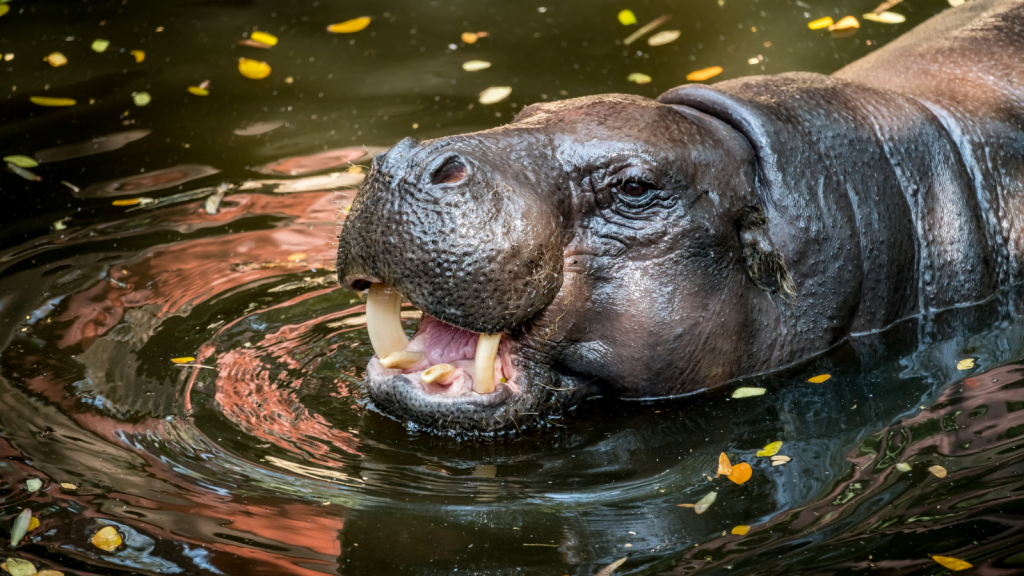The pygmy hippopotamus is a marvel of nature, hiding in the dense forests of West Africa. These elusive creatures are like miniature versions of their larger cousins, but with their own unique charm. Sadly, they’re facing a tough battle for survival, with only a few thousand left in the wild. Despite their rarity, these pint-sized hippos have some fascinating traits that set them apart. From their unusual sleeping habits to their surprising agility, pygmy hippos are full of surprises. Let’s explore some of the most intriguing facts about these captivating creatures.
Smaller Than You’d Think

Pygmy hippos are truly tiny compared to their common hippo relatives. They typically weigh between 180 and 275 kg, which is about a quarter of the size of a common hippopotamus. An adult pygmy hippo stands at just 75-100 cm tall at the shoulder, making them more similar in size to a large pig than their hefty cousins. Despite their smaller stature, they still maintain the characteristic barrel-shaped body of hippopotamuses.
Nocturnal Forest Dwellers
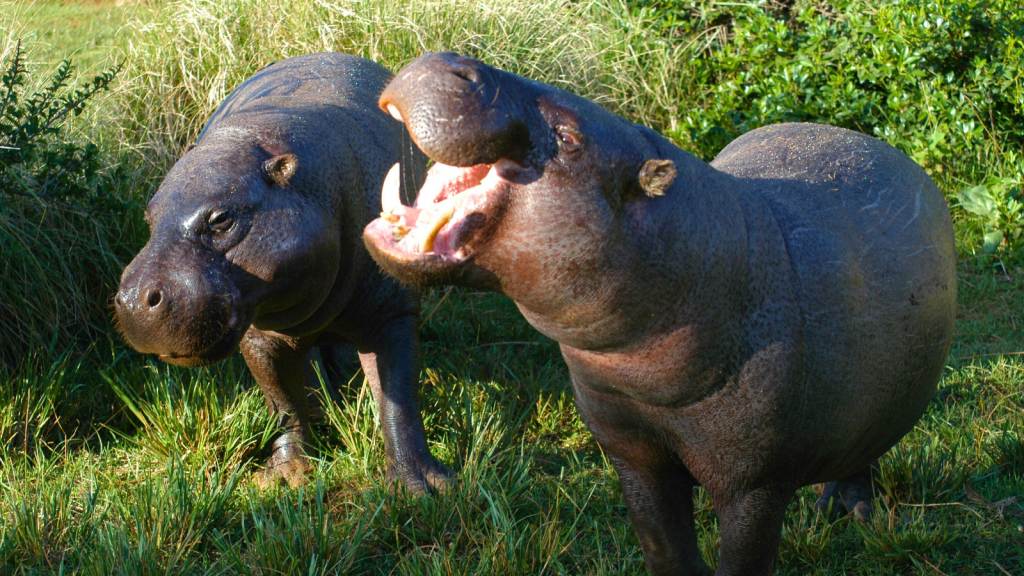
Unlike common hippos, pygmy hippos prefer the cover of dense forests. They’re mostly active at night, spending their days resting in cool mud wallows or hidden in thick vegetation. This nocturnal lifestyle helps them avoid the heat and stay safe from predators. Their eyes have adapted to low-light conditions, with a reflective layer that enhances their night vision.
Excellent Swimmers
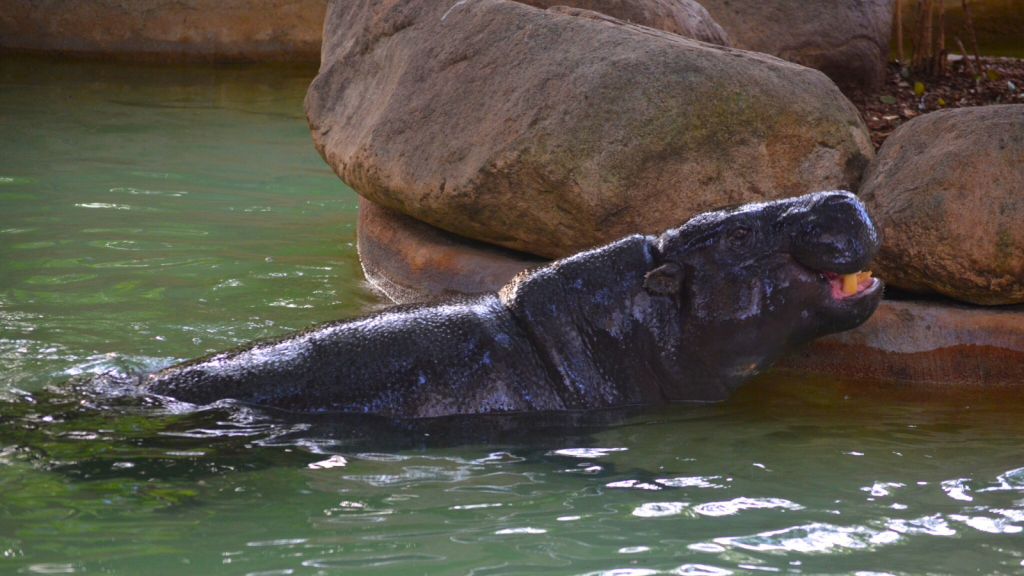
Despite their small size, pygmy hippos are incredibly adept in the water. They have webbed toes that help them paddle efficiently, and they can hold their breath for up to five minutes underwater. Their nostrils and ears close automatically when submerged, allowing them to stay under for extended periods. They’re also known to walk along the bottom of rivers and streams rather than always swimming on the surface.
Solitary Creatures
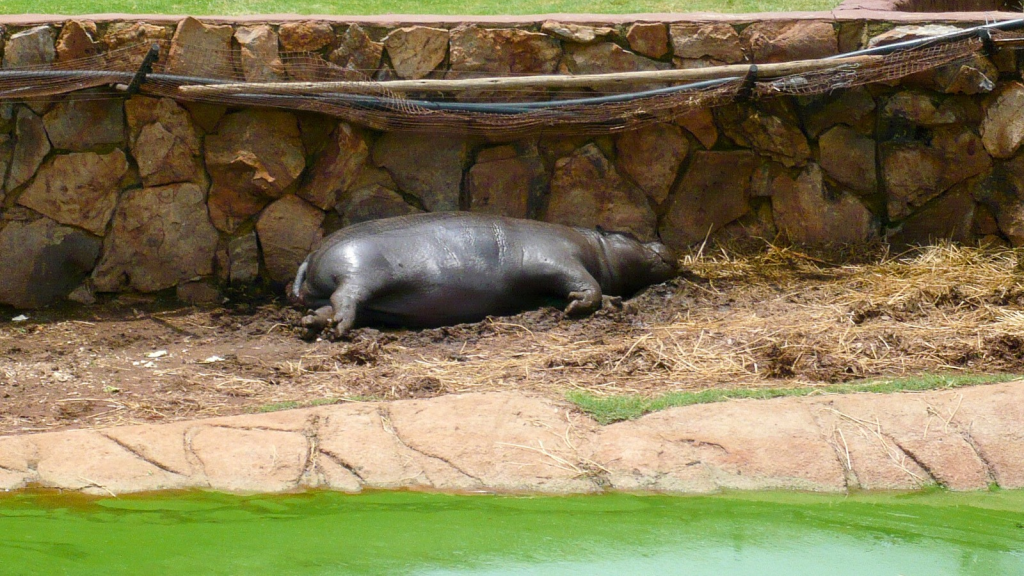
Unlike their gregarious cousins, pygmy hippos prefer a solitary lifestyle. They only come together for mating, with mothers and calves staying together for a short period. This solitary nature makes them even more challenging to study in the wild. Each pygmy hippo maintains its own territory, which they mark with their dung to warn off other hippos.
Vegetarian Diet
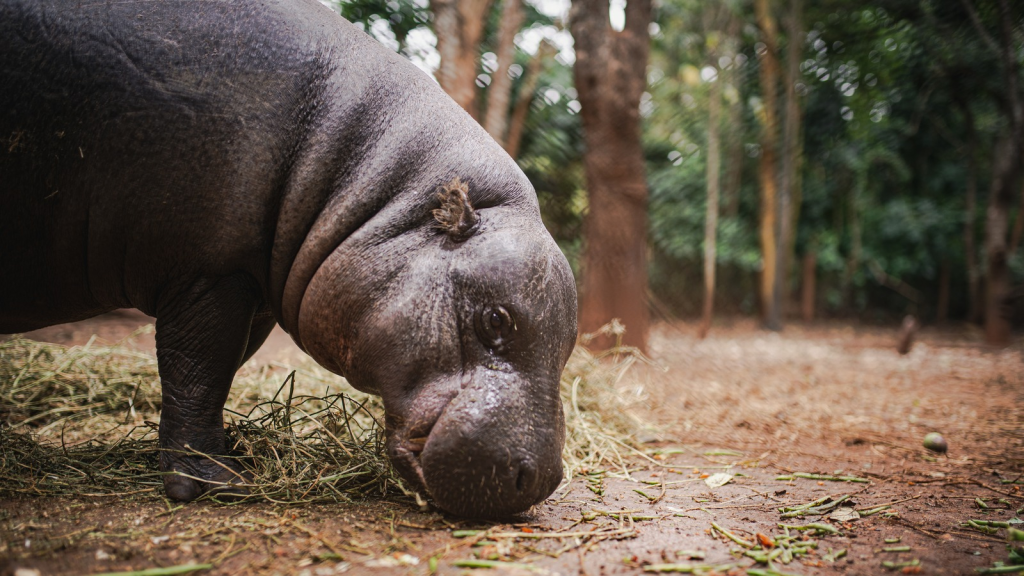
Pygmy hippos are herbivores, munching on a variety of plants found in their forest habitats. Their diet includes ferns, broad-leaved plants, and fallen fruits. They use their wide, strong lips to grasp and tear vegetation, much like their larger relatives. Their efficient digestive system allows them to extract maximum nutrients from their plant-based diet.
Pink ‘Sweat’
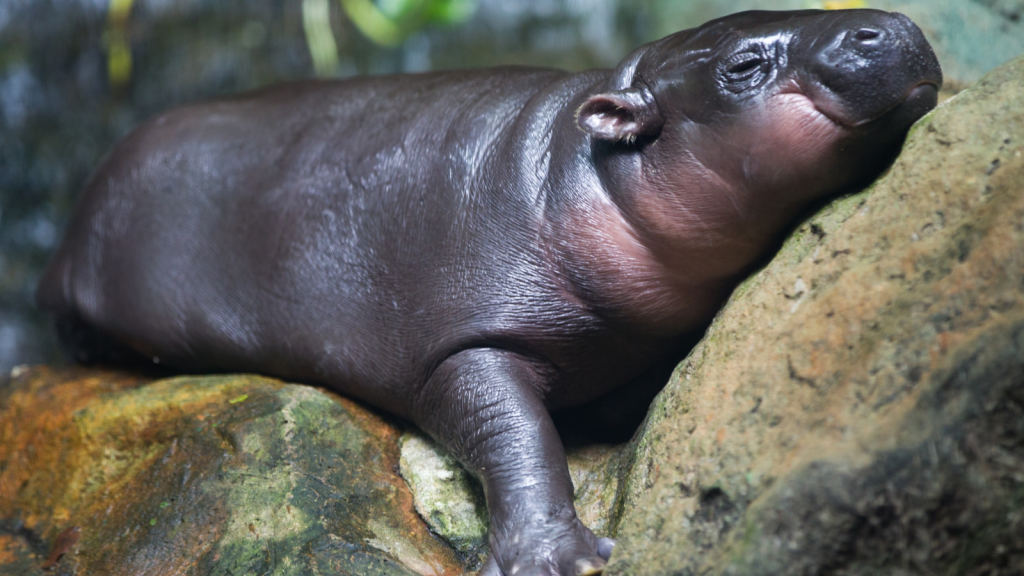
Like common hippos, pygmy hippos secrete a pinkish substance from their skin that acts as a natural sunscreen and antiseptic. This oily secretion, often mistaken for sweat, helps keep their skin moist and protected from the sun’s harsh rays. The substance, known as “blood sweat,” also has antibacterial properties that help prevent infections in their sensitive skin.
Endangered Status

Sadly, pygmy hippos are classified as endangered by the International Union for Conservation of Nature (IUCN). Their population has declined dramatically due to habitat loss, hunting, and human encroachment. It’s estimated that fewer than 2,500 mature individuals remain in the wild. Conservation efforts are underway in countries like Liberia and Sierra Leone to protect their remaining habitats and reduce hunting pressure.
Impressive Jumpers

Despite their stocky build, pygmy hippos are surprisingly agile. They can jump over fallen logs and other obstacles in their path with ease. This ability helps them navigate the dense undergrowth of their forest homes. They’ve been observed clearing obstacles up to 1.5 meters high, which is impressive given their short legs.
Long-lived Animals
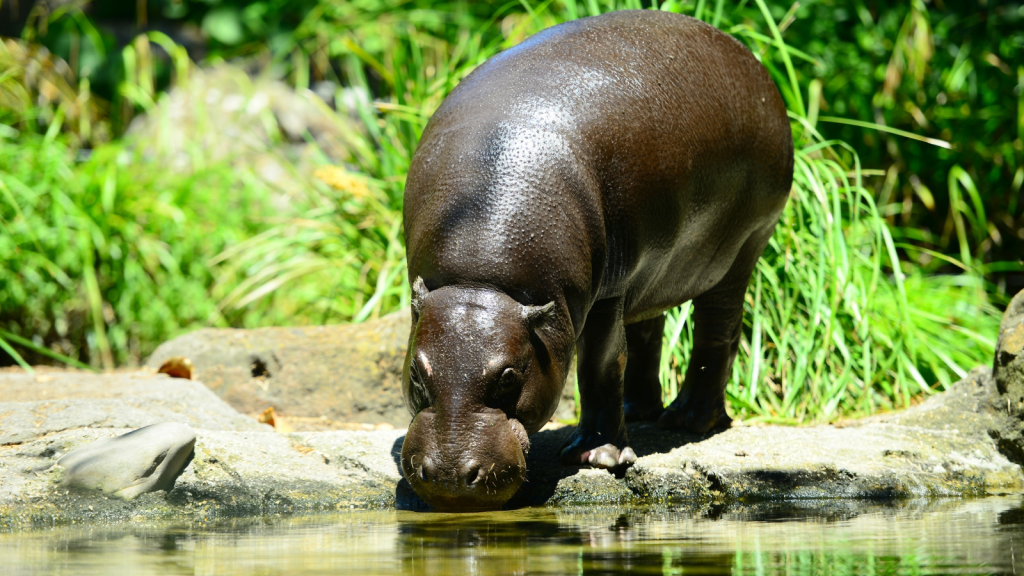
In captivity, pygmy hippos can live for an impressive 40-50 years. Their lifespan in the wild is likely shorter due to various threats, but they’re still considered long-lived animals compared to many other mammal species. This longevity is partly due to their relatively low metabolic rate and lack of natural predators in their adult stage.
Unique Teeth
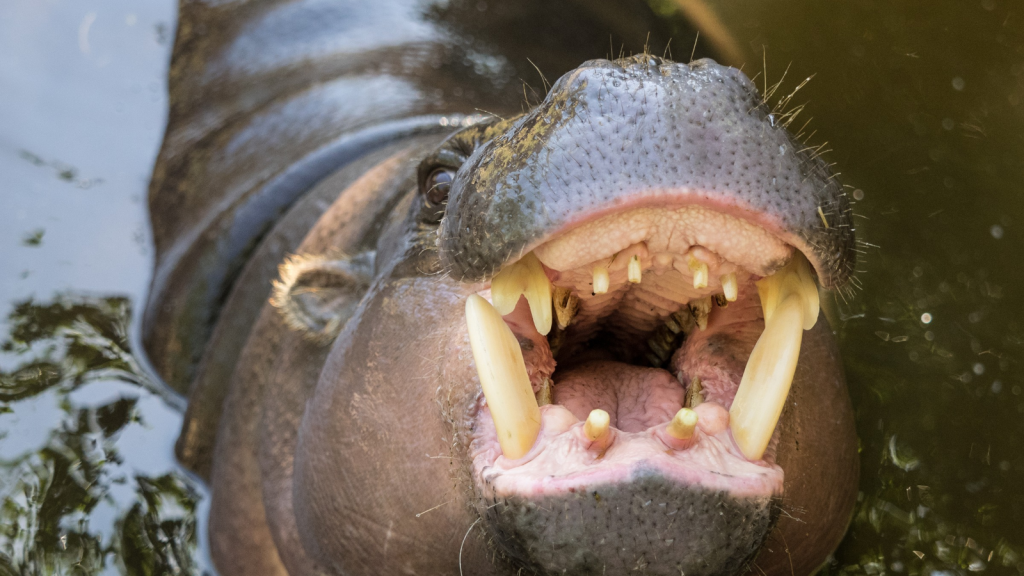
Pygmy hippos have interesting dental adaptations. Their canine and incisor teeth grow continuously throughout their lives, much like rodents’ teeth. This constant growth helps them maintain sharp teeth for cutting through tough vegetation. They have a total of 36 teeth, including tusks that can grow up to 40 cm long in males.
Silent Communication
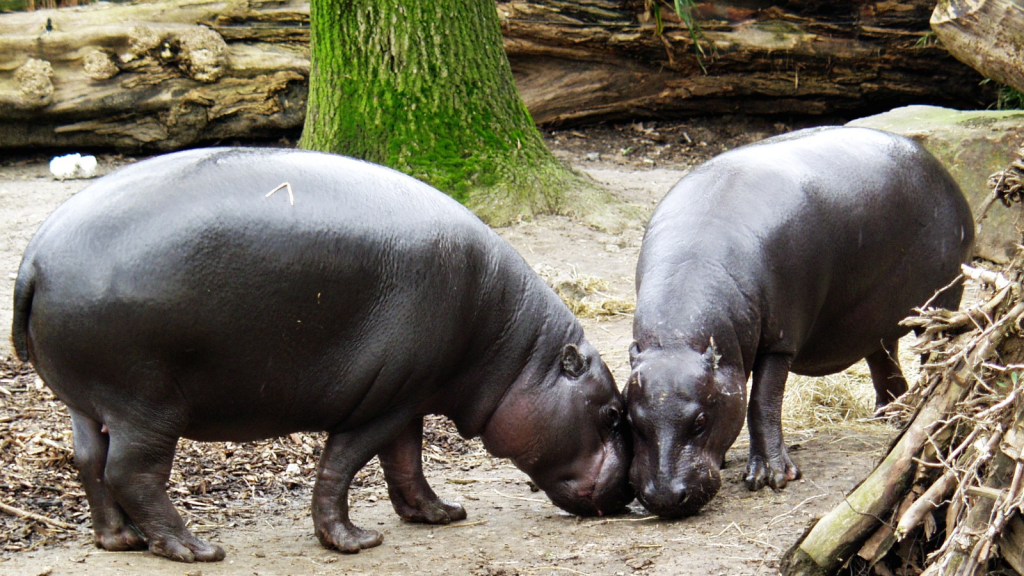
These quiet creatures rarely vocalise, unlike their louder common hippo cousins. Instead, they communicate through scent marking, using their territory to leave messages for other pygmy hippos in the area. When they do vocalise, it’s usually in the form of quiet grunts or squeaks, particularly between mothers and calves.
Excellent Sense of Smell
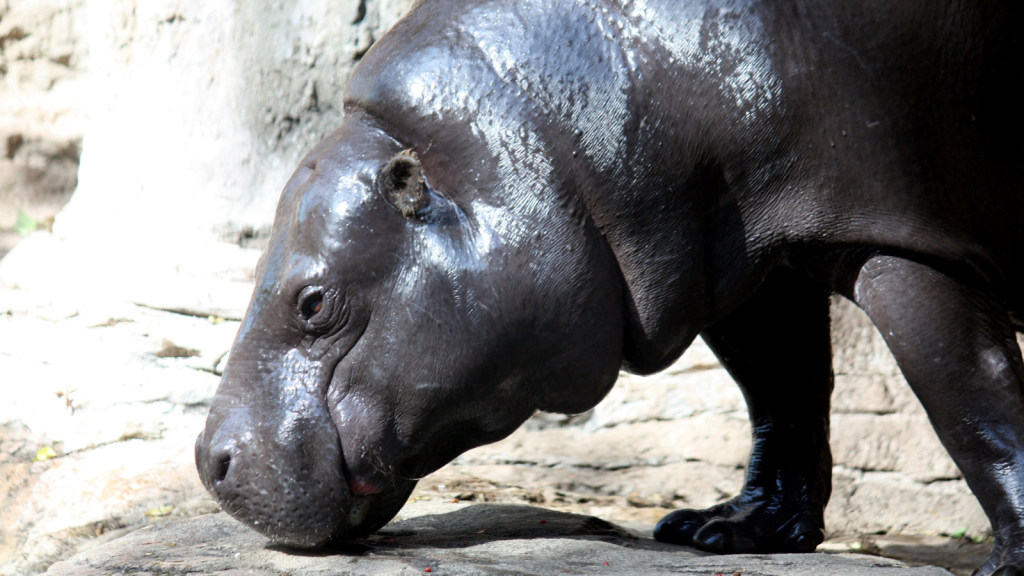
Pygmy hippos have a keen sense of smell, which they use to navigate their forest homes and find food. Their nostrils are positioned high on their snouts, allowing them to breathe easily while mostly submerged in water. This advanced olfactory system also helps them detect potential threats and identify other hippos in their territory.
Unique Skin

The skin of a pygmy hippo is remarkably sensitive and prone to drying out. To combat this, they spend a lot of time in water or mud, which helps keep their skin moist and protected. Their skin is also much thinner than that of common hippos. Unlike their larger cousins, pygmy hippos have hair on their ears and tail, which may help with sensory perception.
Slow Breeders
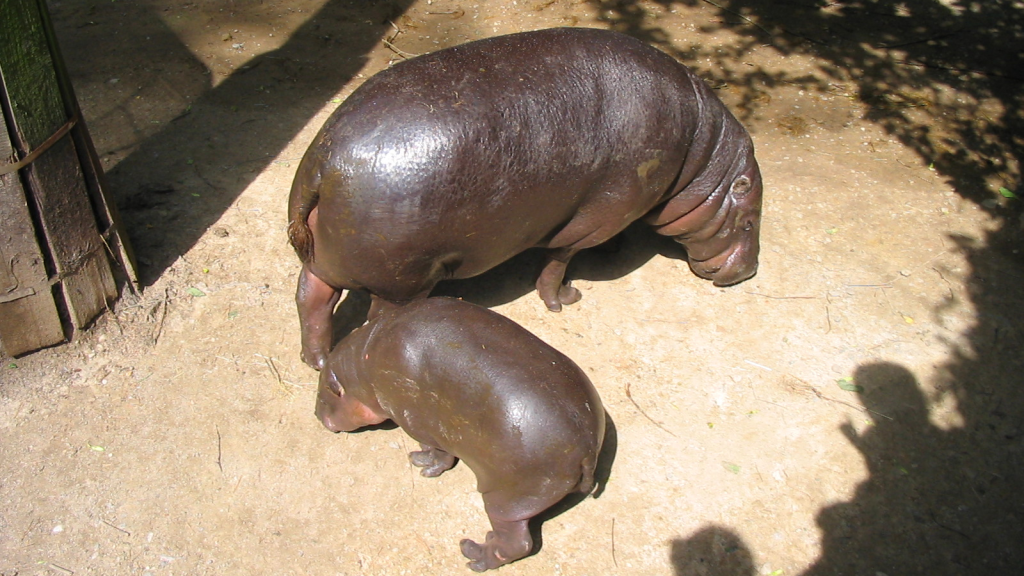
Pygmy hippos have a long gestation period of about 6-7 months, and typically only give birth to one calf at a time. Calves stay with their mothers for several months before becoming independent. This slow breeding rate makes population recovery challenging. Newborn calves weigh only 4.5-6.2 kg and are initially hidden in dense vegetation by their mothers for protection.
Cultural Significance
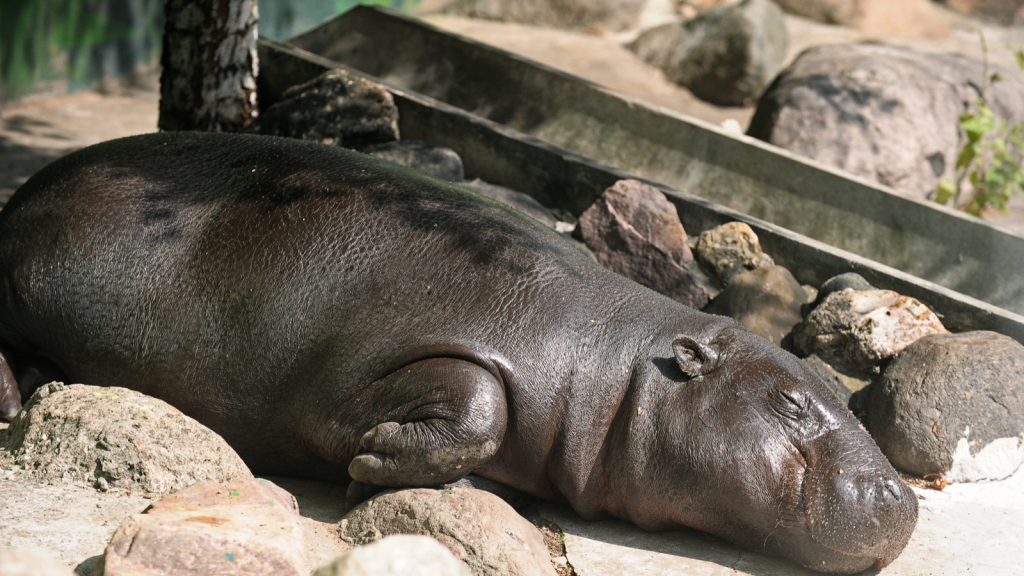
In some West African cultures, pygmy hippos hold a special place in local folklore and traditions. They’re often seen as symbols of strength and fertility, featuring in various myths and legends passed down through generations. In Liberia, the pygmy hippo is sometimes referred to as the “water cow” and is considered a sacred animal by some indigenous groups.
Becky is a fervent wildlife enthusiast and pet care expert with a diploma in canine nutrition. Her love for animals stretches beyond the domestic, embracing the wild tapestry of global fauna. With over a decade of experience in animal welfare, Becky lends her expertise to OutlandishOwl through insightful articles, captivating wildlife information, and invaluable guidance on pet nutrition. Her work embodies a deep commitment to understanding the intricate lives of animals and a passion for educating others on sustaining natural habitats. Becky's hands-on conservation efforts and her knack for translating complex dietary science into practical pet feeding tips make her an indispensable voice for creatures great and small.

